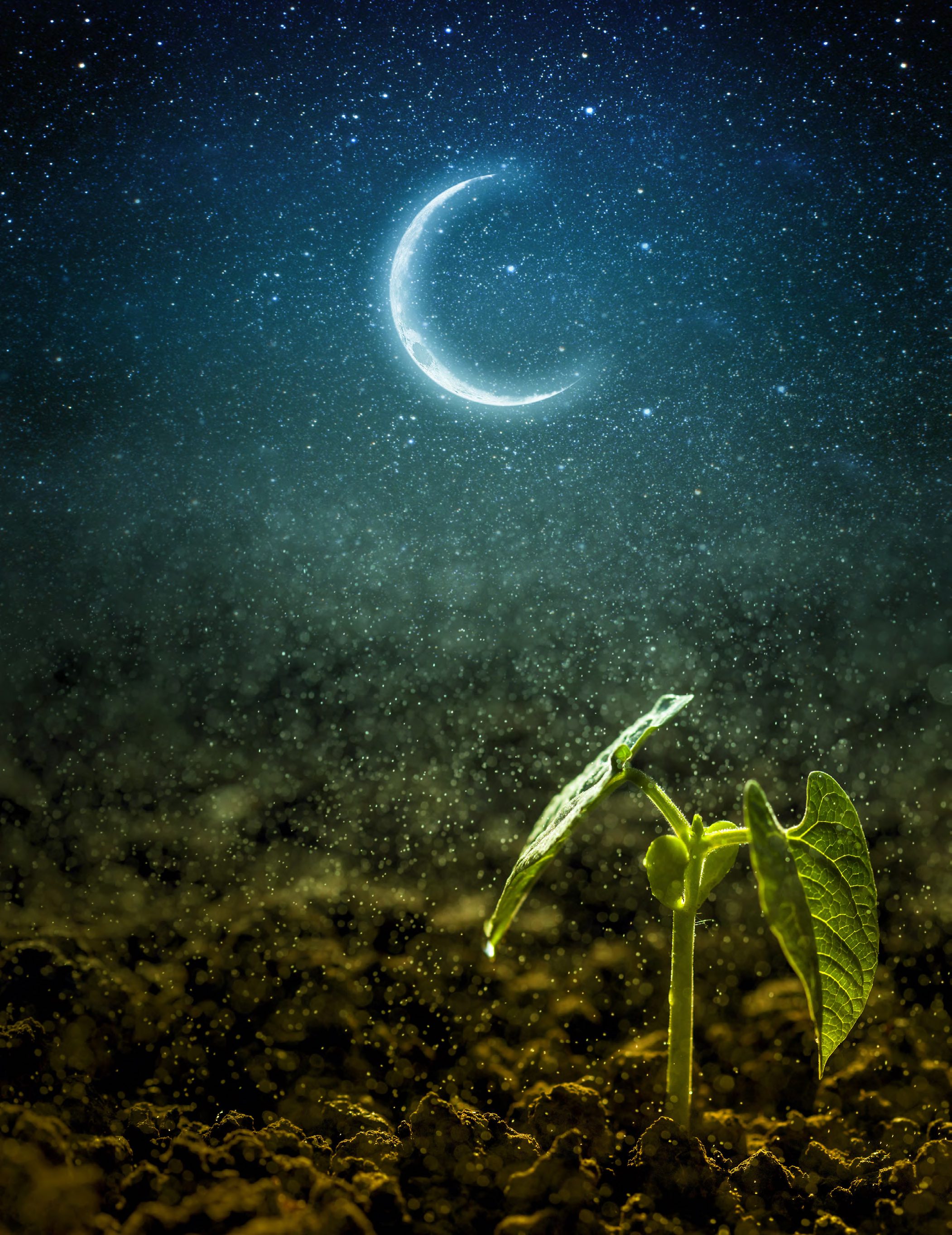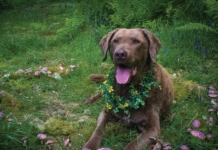“The moon replenishes the earth; when she approaches it, she fills all bodies, while, when she recedes, she empties them.”
—from Natural History by Pliny the Elder, first century Roman naturalist
For centuries, men and women have farmed by the light of the moon, charting celestial cycles to pinpoint the best moment for the magic to happen, when tiny seeds and tender plantings, lovingly tended, shoot up and grow into a soulful and nourishing harvest.
The system, now known as biodynamic agriculture, is a practice leavened with scientific and spiritual mojo. “Biodynamic agriculture works with the rhythm of the cosmos and the earthly rhythm,” says Eduardo Rincon, president of the Biodynamic Association of Mexico. “And the intention of working with those cycles is to employ good soil, good plants, and a good soul—consciousness, or part of the intention we put into healing ourselves.”
Biodynamics is a form of sustainable agriculture that employs regenerative practices. It grows out of respect for the earth—no synthetic pesticides, fungicide, fertilizers—and a loving appreciation for the soil and ways to sustain it. Among its goals are to reduce carbon emissions that can lead to climate change, employ crop rotation, improve water quality, and use biodiversity so that waste in one area fuels another in an interdependent system.
In many ways, biodynamics overlaps with organic farming: Both strive to form a relationship with nature, but the psycho-spiritual philosophy of biodynamics goes well beyond. At its core it is a meld of astrology, homeopathy, and mysticism rooted in the work of Austrian philosopher Rudolf Steiner, founder of the renowned Steiner Schools. Steiner picked up knowledge from the Ancient Greeks, down through the Middle Ages, and added a spiritual component when he brought it forward into modern times.
“Whether it’s working with soil, water, animals—we’re all directly involved in a daily practice of entering into harmony with nature,” says Rincon. “However, within organic agriculture, there’s a heavy focus on the physical manipulation of substances—land, plants, and minerals that we’re here to use up. In biodynamics, it’s more of a movement, a consciousness, a cosmological approach. We are called to try to perceive, within our own organism, the spiritual reality behind the natural world, to see the divine in nature. The real goal is to take what proceeds from that spiritual insight and put it to practical use.”
Spiritualism and the Occult
Not surprisingly, Steiner was a controversial figure.
In Steiner’s time—the late 19th to early 20th century—spiritualism and the occult were extremely fashionable. People were attending seances and dabbling in mysticism. Steiner was an avid proponent of theosophy, a popular philosophical movement founded in 1875, with teachings about God and the world based on mystical insight. Steiner’s self-professed “spiritual sciences” evolved from theosophy and led him to create reforms in education and agriculture. Steiner also founded a school of philosophy known as anthroposophy, based on belief in the existence of an objective spiritual world that humans can access through inner development or, as we might say now, “working on our ourselves.”
Around the same time, in 1906, a Swedish landscape painter named Hilma af Klint had a breakthrough in her Stockholm studio. Af Klint’s work, which The New Yorker called “visionary,” was shown recently at the Guggenheim Museum in New York City. Some art historians, including Guggenheim Museum curator Tracey Bashkoff, are now claiming af Klint as the first abstract painter. Whether or not that proves to be true, af Klint—a mystic who studied theosophy and anthroposophy and had been attending seances since she was seventeen—had undoubtedly created a new visual vocabulary. Her strangely beautiful, compelling, and otherworldly paintings, with their esoteric loops, tunnels, and abstract shapes that appear to have been channeled from another realm, first appeared in 1906, six years before abstract masters Wassily Kandinsky, Piet Mondrian, and Kazimir Malevich, long considered the first abstract painters, showed theirs.
Af Klint claimed that she was guided by a group of spirits with whom she was communicating on a psychic level, and those spirits led her to produce more than a thousand works, most significantly a group of ten massive paintings, ten-and-a-half feet high by eight feet wide, called The Largest. Af Klint was interested in exploring the natural—and supernatural—environment and, according to the Paris Review, “the inherent connections between life at the micro and macro levels,” something that Steiner would also explore with biodynamics.
Af Klint traveled in the same circles as Steiner and, in 1908, he visited her Stockholm studio. He gave her advice that proved disastrous. He told her to give up her otherworldly inspirations and basically follow her own. It seems to have paralyzed her artistically, at least for the next four years. And when she started painting again, the power of her work was never the same.
Growth of Biodynamics
Biodynamics has become increasingly popular in the U.S. and around the globe, in farms, orchards, vineyards, and gardens as global warming becomes a more pressing issue. Agricultural land occupies 50 percent of the earth’s habitable surface and about 41 percent of U.S. land, but in the U.S., food production contributes 18 percent of total greenhouse gas emissions.
Biodynamic farming can help control carbon emissions that lead to global warming.
As consumers request more biodynamic goods and more farmers learn biodynamic practices, it has become easier to find biodynamic wines and biodynamic beauty and personal care brands, like Jurlique, Weleda, Dr. Hauschka, Primavera, Eminence, and Zents. The challenge now will be to maintain the authenticity of biodynamic agriculture and its certification, which can be complicated.

Laws of Gravity and the Moon
Biodynamics not only incorporates the moon rhythms; it relies on other rhythms as well: perigee and apogee, the ascending moon, the crossing of the moon with the sun, the lunar cycle, and its interaction with Saturn.
In 1687, when Isaac Newton proposed the laws of gravity, he explained that ocean tides result from the gravitational pull of the moon on the earth’s oceans. That force also affects the water content of the soil: More moisture is created in the soil at the new and full moons. That moisture makes seeds sprout and plants grow. According to biodynamic principles, the moon affects the growth of plants. Most plants need rhythmic exposure to moonlight—at least for a week or so around the full moon—to develop immunity, regenerate, and grow.
During the full and new moons, the earth’s electromagnetic energy—energy created from the earth’s magnetic field, which protects the earth from cosmic radiation—increases. One explanation is that quartz and other stones within fault lines generate higher levels of electromagnetic energy at that time, from the moon’s gravitational pull on the earth. It’s believed that animals can also feel the shift and that it affects the cells in our bodies.
The coral at the Great Barrier Reef in Australia spawn like crazy during the full moon. In 2007, a University of Queensland study confirmed that coral know when the moon is full—even though they don’t have eyes—because they have a gene that enables them to sense how much moonlight has hit the water. The energy shift also leads birds to migrate and other animals to mate and hunt in patterns that coincide with the full moon. A friend insists that her Lyme disease flares up in the full moon, when this energy shifts and fires up the Lyme bacteria.
The Future
Though he may not have seen climate change coming, in many ways, Steiner was prescient. If we are to sustain the planet and continue to feed its inhabitants, we need to bring ethics, values, and caring—a conscience—to it. We need to take an introspective, thoughtful approach to regenerating the land and the cosmos, and keeping both healthy. “People are asking, How is the work on the land connected to the work I need
to do spiritually as an individual? What is meant by healing, and transforming the work on the land to a sacred healing?” says Rincon.
It’s time to find the answers.



































